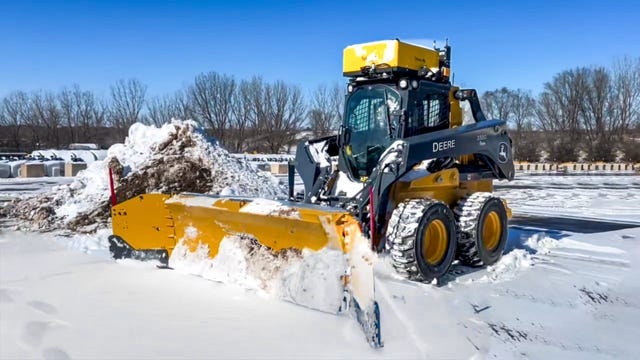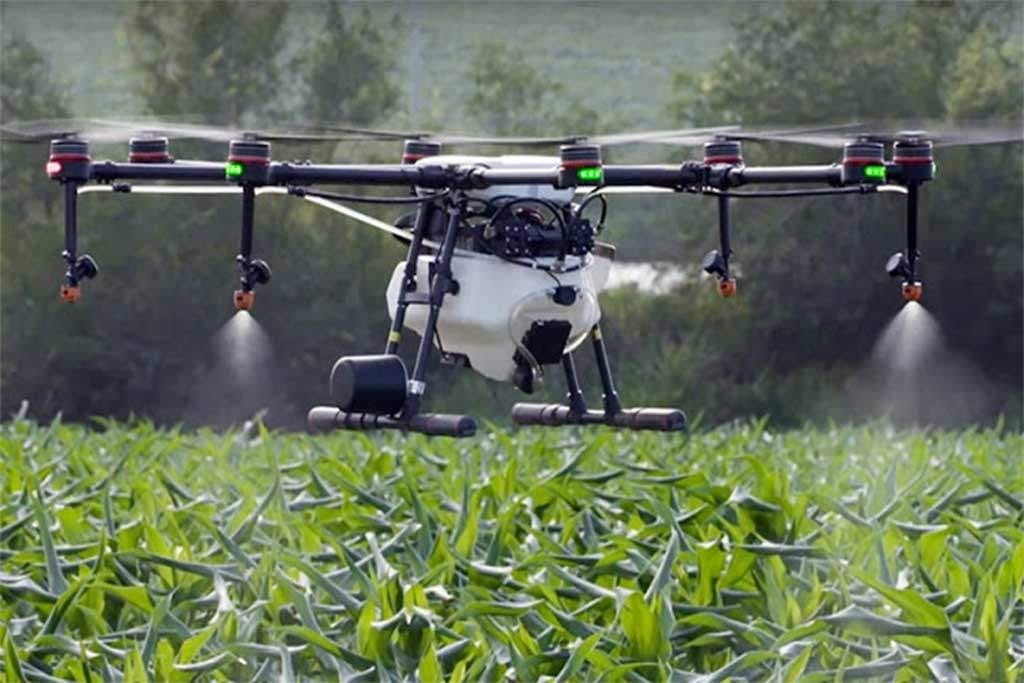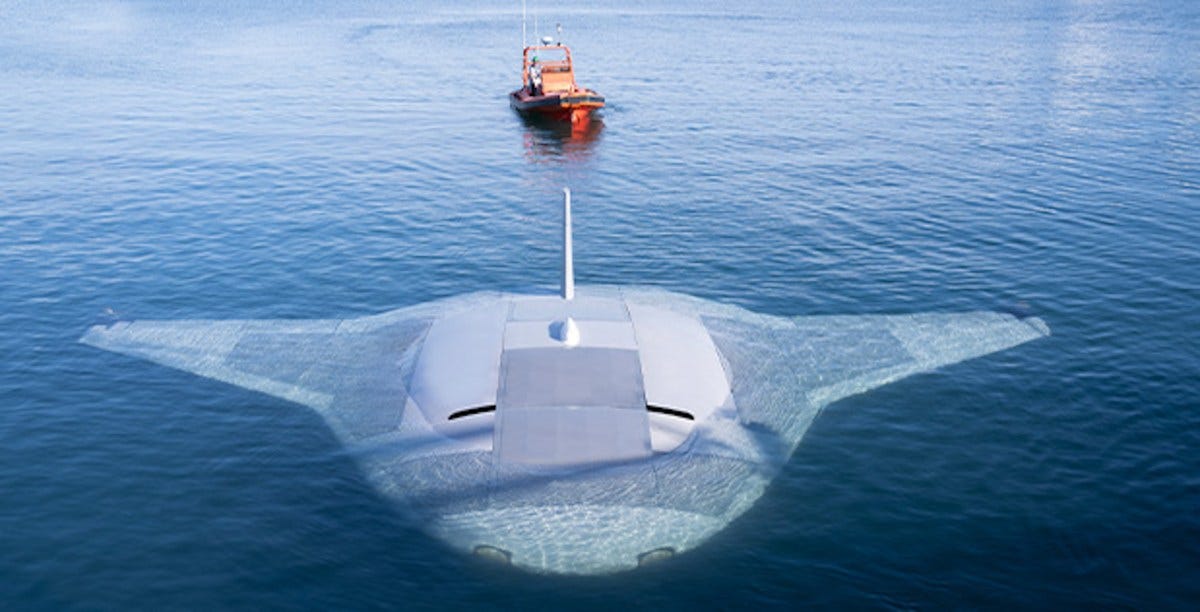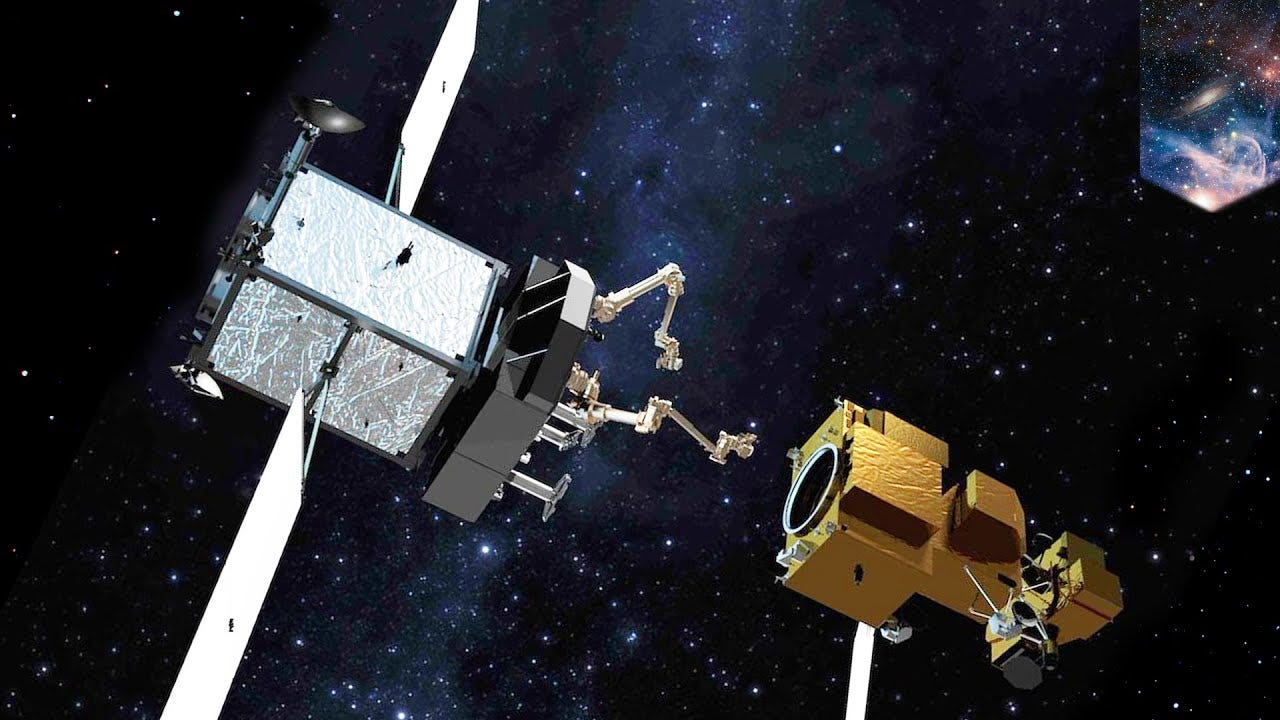50 Autonomous Systems That Will Transform the World
Real-world examples across land, air, sea, and space
Autonomous systems will reshape the world — and America must lead. The American Autonomy Initiative calls for bold, coordinated action to accelerate these systems across land, sea, air, and space. Like the Internet before it, autonomy will be deeply disruptive but also a generational opportunity for innovation, security, and economic growth.
To show the breadth and impact of this shift, we’ve compiled 50 real-world examples of how autonomous systems are already transforming every domain. Take a look:
LAND
1. Autonomous Delivery Vehicle
Driverless vans and sidewalk bots that deliver groceries, medicines, and parcels, cutting last-mile delivery costs by up to 40%. (McKinsey)
2. Autonomous Ambulance
Self-driving ambulances that shorten emergency response times, particularly in congested cities.
3. Autonomous Street Sweeper
Electric autonomous sweepers lower urban cleaning costs and reduce emissions. Pilots underway in cities like Helsinki.
4. Autonomous Snowplow
Deployed in Norway and Canada, autonomous plows can operate in whiteout conditions around the clock. (Robotics Business Review)
5. Trash Collection Robot
Compact street robots automate residential garbage collection. Pilots in Japan and the Netherlands.
6. School Bus Autonomy
Navya and others have piloted self-driving school shuttles in controlled settings, addressing driver shortages.
7. Road Painting Vehicle
Autonomous line-painting bots reduce road crew injuries and paint more precisely.
8. Smart Grid Repair Bot
Self-guided robots inspect transmission lines and substations for faults, speeding up power restoration.
9. Construction Vehicle
Komatsu and Built Robotics offer autonomous excavators and bulldozers, improving safety and productivity.
10. Freight Convoy
Truck platooning cuts fuel use by 10–15%, lowers emissions, and reduces driver fatigue. (NREL Study)
11. Tunnel Mapping Rover
Used by utilities and civil engineers to assess subterranean infrastructure in hard-to-reach places.
12. Bridge Inspection Drone
Climbing or tethered drones reduce the need for scaffolding and improve bridge safety checks.
13. High-Rise Inspection Drone
Used in New York and Singapore, these drones spot façade cracks and corrosion at high altitudes.
14. Disaster Response Mapping
Autonomous rovers or UGVs provide real-time maps after hurricanes, quakes, or floods.
15. Urban Delivery Drone (Ground)
Companies like Starship and Amazon Scout are actively piloting these for short-range deliveries.
16. Autonomy Training Dome
AI simulation centers with physical environments and human-machine co-training.
17. Autonomy Academy Classroom
School robotics labs with AI components prepare students for a future of intelligent machines.
AIR
18. Drone Firefighting
Drones can reach wildfires faster and fly at night, reducing fire suppression costs. (NASA FireTech)
19. Autonomous Rescue Drone
Used in alpine rescues and disaster zones; drones find lost people using thermal cameras.
20. Fire Spotting Tower Drone
Persistent surveillance drones scan forests, detecting smoke or hotspots faster than satellites.
21. Fire Detection Patrol
Routine fire patrols during fire season using autonomous drone fleets.
22. Search and Rescue at Night
Night-capable drones can cut SAR times in half. Used by FEMA and Swiss Rega.
23. Precision Crop Spraying Drone
Reduces pesticide use by 30–50%. Adopted widely in China, Brazil, and U.S. vineyards.
24. Pollution Detection in Waterways (Aerial)
Aerial drone sensors detect nutrient runoff, oil slicks, or algae bloom spread.
25. Airport Ground Crew Robots
Autonomous baggage carts and pushback tugs reduce tarmac congestion. Tested at Schiphol and Heathrow.
26. Police Surveillance Drone
Used in cities like Chula Vista for real-time eyes-on-scene response. (NYT coverage)
27. Disaster Relief Supply Drop Drone
Zipline and others have shown drones can deliver vaccines and blood to hard-to-reach locations.
28. Wildlife Tracking Drone
Used by conservationists to monitor elephants, whales, and reindeer.
29. Coastal Erosion Monitoring
Drones help geologists map shoreline retreat in real-time.
30. Crop Monitoring Drone
Multispectral imagery allows predictive analytics for harvest planning and irrigation.
31. Space Debris Removal Drone (Atmospheric Edge)
High-altitude drones simulate orbital interception of space junk.
32. Forest Canopy Scanner
Used in the Amazon and Congo Basin to catalog biodiversity with LIDAR.
33. AI-Powered Conservation Drone
Real-time detection of illegal logging, poaching, or fishing based on trained models.
SEA
34. Port Autonomy
Ports like Rotterdam and Singapore use autonomous vehicles and cranes for 24/7 operation.
35. Underwater Inspection Drone
Blue Robotics and others build ROVs that inspect pipelines, ships, or sea walls.
36. Submarine Recon Drone
Navy and private firms use UUVs for ocean floor mapping, surveillance, and threat detection.
37. Oil Rig Inspection Drone
Flying or underwater drones detect corrosion, gas leaks, and structural anomalies.
38. Mine Detection Robot (Naval)
Used by U.S. and NATO for demining coastal areas with autonomous sonar drones.
39. Autonomous Tanker Ship
Kongsberg and others are developing crewless container and fuel ships with remote oversight.
40. Self-Driving Freight Railcar
Autonomous short-haul rail systems could improve logistics at ports and industrial hubs.
41. Autonomous Waste Sorting Robot
Used in coastal waste facilities to automate sorting of plastic and recyclables.
42. Mobile Power Restoration Unit
Barge- or truck-mounted power units autonomously deployed in post-storm zones.
SPACE
43. Satellite Repair Arm
DARPA and NASA are developing on-orbit servicing systems for satellite longevity.
44. Autonomous Satellite Deployment
Used by SpaceX and Rocket Lab to position payloads post-launch.
45. Lunar Rover Scout
NASA's VIPER and commercial projects use autonomous scouts for moon mapping.
46. Space Debris Removal (Orbital)
ClearSpace and Astroscale working on active debris removal missions.
47. Space-Based Mapping Systems
Autonomous imaging platforms track crops, water, and military activity.
48. Orbital Simulation/Training Environments
AR/VR and physics simulators prep astronauts and AI agents for space systems.
49. Deep-Space Probe Autonomy
Autonomous decision-making needed for Mars missions due to signal delay.
50. Asteroid Mining Bots
Theorized robots would extract rare minerals autonomously; NASA and private firms exploring feasibility.
Just the Beginning…
These 50 use cases are only a glimpse of what’s coming. As the technology matures and policy catches up, autonomy will scale rapidly across every domain. America has the talent, infrastructure, and capital to lead. What we need now is bold action. Like it or not, the future is autonomous. Let’s lead it.






